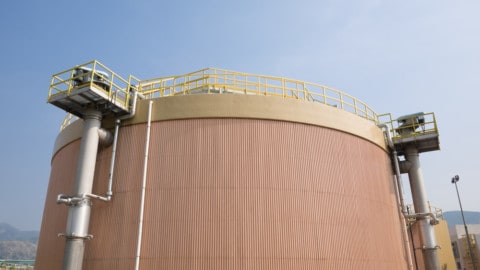The Australian Institute of Refrigeration, Air Conditioning and Heating (AIRAH) has released a report on the future of HVAC in net-zero buildings, finding that building regulations must assess true performance and target net-zero energy, and that mandatory energy disclosure for existing buildings is a must.
The report is based on a foresighting workshop in which a variety of experts and practitioners from the HVAC, building services and associated industries considered what form HVAC will take in the net-zero building sector of the future.
AIRAH CEO, Tony Gleeson, said, “Foresight can help an industry navigate change by providing an early warning of the barriers and opportunities ahead, and it also provides evidence for government policy makers with grass roots insights.
“By tasking a group of experts and practitioners to develop a credible picture of future buildings and future heating, ventilation and air conditioning (HVAC), AIRAH has been able to start the conversation on the strategies that can be used, and the changes to industry, technology and practice that will be required to make this happen.”
The experts were posed the question, ‘How can our energy-intensive approach to HVAC in buildings be further developed, refined and changed to help deliver the net-zero buildings of the future?’
The paper provides a snapshot of future HVAC in a net-zero world, and outlines some of the main themes from the workshop discussions, such as:
• The changing relationship and behaviour between occupants and buildings
• A shift in the approach and objectives for town planners
• A move to low-energy HVAC technologies, including step changes in controls
• A regulatory focus on building performance rather than construction
• The extension of government regulation into operational energy use
AIRAH’s Phil Wilkinson, said that following an analysis of the most likely changes that are needed and the most common barriers that may be encountered, a series of recommendations or actions have been developed to help government and industry understand how the HVAC and property sectors can best transition to delivering and managing net-zero energy buildings.
“AIRAH will continue to lead industry change by ensuring the implementation of the PRIME whole-of-HVAC&R industry strategy for the transition to low emissions. AIRAH is working with the CSIRO and PRIME to establish an Innovation Hub for Affordable Heating and Cooling, or iHub.” Mr Wilkinson said.
“And of course, the Institute will continue to advocate for energy policy changes to incentivise the design and delivery of net-zero buildings and low-emission HVAC.”
The key findings of the foresighting report are:
• Building regulations must assess true performance and target net-zero energy over time
• A renewed focus on existing buildings is required, including mandatory energy disclosure, incentives for energy efficiency maintenance, and upgrade assistance and support
• Training and education initiatives should help all stakeholders understand the risks and opportunities of a net-zero building. Development of a Net-Zero Building Retrofit Toolkit and behaviour-change programs for building users are key
• Increased research into low-emission HVAC and better support for innovative technology and approaches are needed. On the agenda, an HVAC research roadmap and improved research/industry communications pathways
• Increased investment in Australian research for Australian innovations in HVAC is required to counteract the conservatism of the industry
• Government and industry should support innovation and commercialisation of low-emission HVAC technologies by supporting demonstration projects











